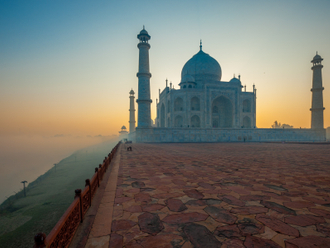
Nine songs, eight languages, four women, one album. It’s hard to quite define the sound of Indiva, a fusion ensemble whose debut album launched last month. It’s Bollywood, it’s jazz, it’s reggae, it’s pop.
With Sufi references and elements of Carnatic and Hindustani classical, with songs that interpret eternal themes and reflect current issues, the album might well have been a hot mess, but their sound is fresh, harmonious and a fascinating representation of contemporary India — as Dubai audiences found out when the band played at the Madinat Jumeirah in May.
Varied influences
“This bunch — we’re definitely not a girl band! — is as diverse as it can get,” laughs Vivienne Pocha, who sings and plays rhythm guitarist on the album.
While each member of the band is an established musician in her own right, all are exponents of different musical styles — and ethnically, each hails from a different part of India.
Pocha comes from the south-western coastal town of Mangalore, but has lived in Mumbai and Kolkata, performing with rock bands in the country’s north-east and starring in national productions of musicals such as The Wiz, The Sound of Music and Jesus Christ Superstar.
She is part of a loose jazz and blues collective with Merlin D’Souza, the keyboardist and composer. D’Souza, who also produced the eponymous album, traces her roots to the western state of Goa, and has scored music for several Indian movies, albums, plays and commercials.
Another of D’Souza’s long-time collaborators is Hamsika Iyer, the award-winning Bollywood playback singer best known for the hit Chammak Challo and the current chart-topper 1,2,3,4, get on the dance floor, from the Shah Rukh Khan film Chennai Express. Iyer is trained in the two Indian classical music styles — Hindustani and Carnatic — and has performed around the world. The ethnic Tamilian and Mumbai native also plays percussion on the album.
“Merlin, Vivienne and I have known each other and worked on different projects in the past,” she says via email, “and it was always a hidden desire to form a band someday. And then, a couple of years back, I shared the stage with Shruti Bhave and everything fell into place.”
Bhave, notable for her work on the TV show Sa Re Ga Ma Pa, comes from the central Indian town of Nagpur and is a trained Hindustani classical singer and violinist. She says fitting in with the others was challenging. “I play violin in the Indian style, in a sitting position. The task for me in the band was to play in the standing position, in the Western style. Initially I felt I was thrown in the lion’s den — I still do — to be torn apart. But it’s fun,” she beams.
Pocha compares their personalities to the four elements. “There was this one time the four of us were rehearsing and it just hit us how different we were from each other and yet we fit like a glove musically. We are like earth, wind, fire and water,” she says. “Our different musical backgrounds are a strength for each of us, enabling us to cross boundaries and not limit ourselves to areas, regions or countries.”
The disparate backgrounds clearly inspired D’Souza’s music. Although she is trained in Western music, the lure of Bollywood proved irresistible. “Retro Bollywood still reigns supreme, [but I wanted to] bottle it with an Indiva-centric sound along with Hamsika’s film repertoire and Shruti’s classical leanings. And Vivienne and I specialise in merging western music with Bollywood-inspired take-offs,” she explains, adding that the different languages only served to emphasise this unity in diversity.
Swahili and Bengali
Even in polyglot India, home to such delights as Hindi jazz and Malayalam rock, few bands are able to so seamlessly manage the transition between languages, serving up Hindi, Konkani, Bengali, Tamil, Swahili and English on one album, some-times with three languages in the same song. “Language is our forte. We’re going to perform in Africa soon, and we’d love to record in Arabic,” says D’Souza.
Iyer says that’s what keeps the music fresh. “Being multilingual brings a different flavour to every song because of the language,” she says. “And every song comes with a message. It could be about realising your self-worth, romance, anger, fun, celebration — it’s just a bundle of emotions being expressed in the form of music.”
Put four women in one room and that’s bound to happen, I say, asking if it’s anything like Sex and the City. “There’s jam sessions, gossip sessions, shopping sessions and feeding-our-face sessions... We’re all foodies and great cooks and rehearsals are always followed by who’s bringing what to the table. We are all women and share that special bond,” Pocha starts off before bringing it back to being women in music.
“It would be refreshing to see more women become percussionists, drummers, horn players, flautists. This is what Indiva found lacking when looking out for good instrumentalists — we found only two good women drummers and one bassist. Although women-only groups are desirable, opportunities need to be opened up so women can take music seriously,” she says.
Iyer sums it up best: “Music is a form of expression. And women need to feel free to form a band and express their views about everything they believe in.”






